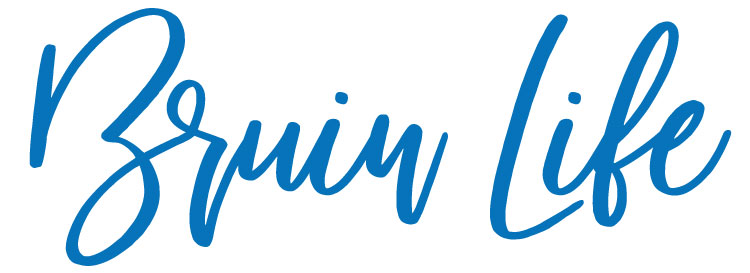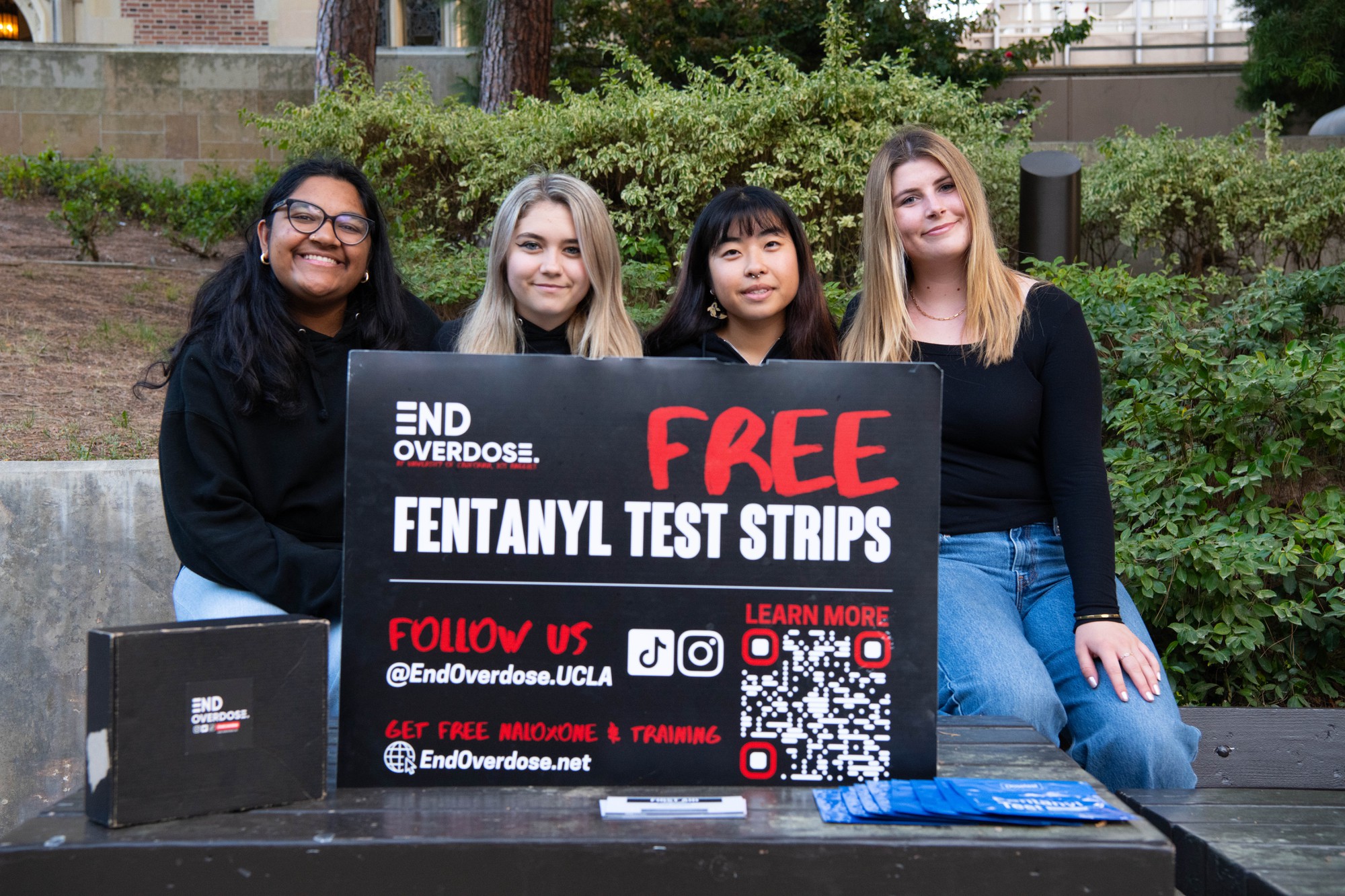UCLA’s college chapter of End Overdose aims to serve the Los Angeles community by educating students about opioid prevention and providing them with access to life-saving resources.
According to the U.S. Drug Enforcement Administration, the leading cause of death for Americans from age 18 to 45 is fentanyl overdose. The Centers for Disease Control and Prevention reported a 24% decline in drug overdose deaths in 2024, noting that community-driven, education-based interventions have played a crucial role in saving lives that could have been lost.
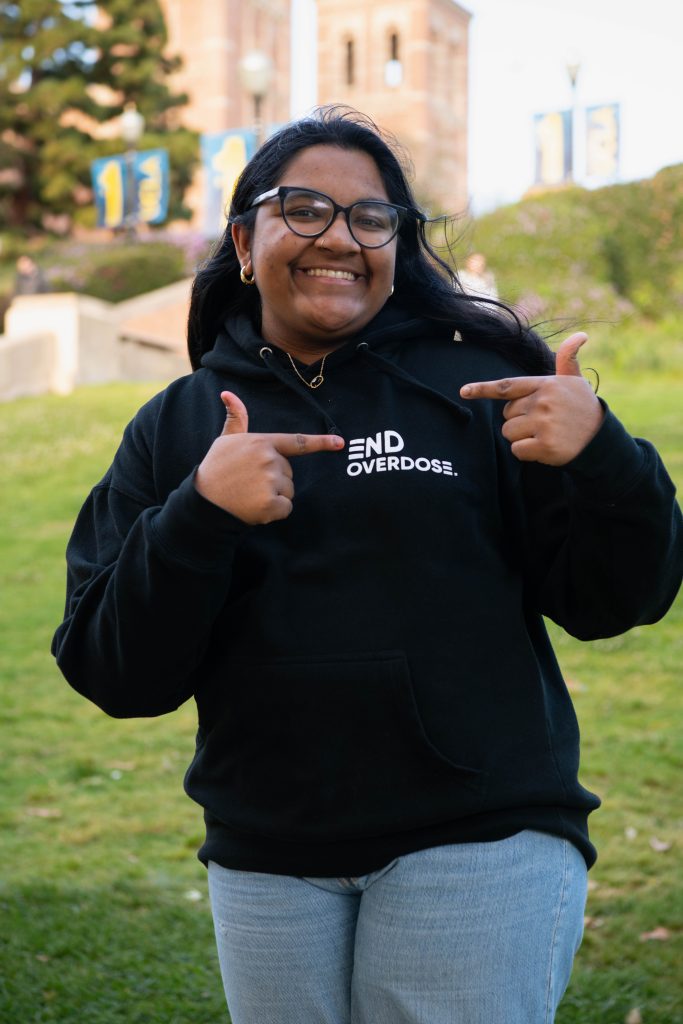
Shreya Sundar, third-year public health student and external outreach VP at End Overdose UCLA poses for a picture at Janss Steps. Photographed by Khaled Al Duwaikat/BruinLife.
Shreya Sundar, a third-year student majoring in public health and the external vice president of End Overdose at UCLA, brands the organization as both preventative and responsive in its approach to help individuals at risk avoid the possibility of experiencing the fatal consequences of an overdose.
“We equip people with preventative measures such as fentanyl test strips so that people are staying safe,” Sundar said. “We also take responsive measures such as distributing naloxone to be used in the case of an overdose.”
End Overdose partnered with the Ashe Student Health and Wellness Center on campus to initiate the UCLA Narcan Distribution Project, giving students and staff free access to naloxone around campus. Sia Bharucha, a fourth-year student majoring in physiological science and the current co-internal vice president of End Overdose, said that the organization also tables at on-campus events such as health fairs, where they offer long-term training sessions on how to respond to an opioid overdose. They table weekly on Bruin Walk too, where rapid trainings are offered.
Sundar explained that rapid and long-term training differ in both content and duration.
“Rapid trainings are about three to five minutes and cover the absolute basics of responding to an opioid overdose [such as] recognizing signs and symptoms, calling 911 and taking responsive measures like administering naloxone,” Sundar said. “It’s very quick and usually done at big festivals like Coachella and Flog Gnaw, where our main headquarter volunteers go.”
She added that long-term trainings last 15 to 20 minutes long and are commonly done for student organizations.
“These trainings are more in-depth, detailing the physiology of overdoses,” Sundar said. “[They] cover respiratory depression, go into how neurotransmitters work and provide more context on different types of opioids.”
Alongside tabling at other events, End Overdose hosts quarterly fundraisers to ensure they can continue to allocate life-saving resources to those in need. Co-president and fourth-year student majoring in psychobiology, Emily Wu, claimed the fundraiser held this winter quarter was greatly beneficial for the organization.
“[This quarter] we put on a flea-market fundraiser at one of the Greek life houses. We reached out to a lot of small businesses. Many are student-run, which I love because you get to learn about our organization and also support students’ products,” Wu said. “We got up to around three hundred dollars in profit, which was a great success. I was really happy to see so many people wanting to support our cause, come see what we’re up to and try to make a difference with us.”
Wu emphasized that her involvement in End Overdose has helped her grow as a leader while trying to make a positive impact on communities both inside and outside of Los Angeles. She also shared that End Overdose has given her the opportunity to explore where her passions for advocacy and music intersect.
“I’m really into concerts and festivals, and my first rave ever was working with End Overdose at Electric Daisy Carnival or EDC in Las Vegas,” Wu said. “Going in, I was focused on educating people and doing the trainings, but I got to see how people’s love for EDM can blend into their passion for wanting to create a safer environment for their community.”

The End Overdose board on Bruinwalk. Shreya Sundar, Cayla Younger, Akane Shimoyoshi and Kenan Thomas, (Left to Right). Photographed by Khaled Al Duwaikat/BruinLife.
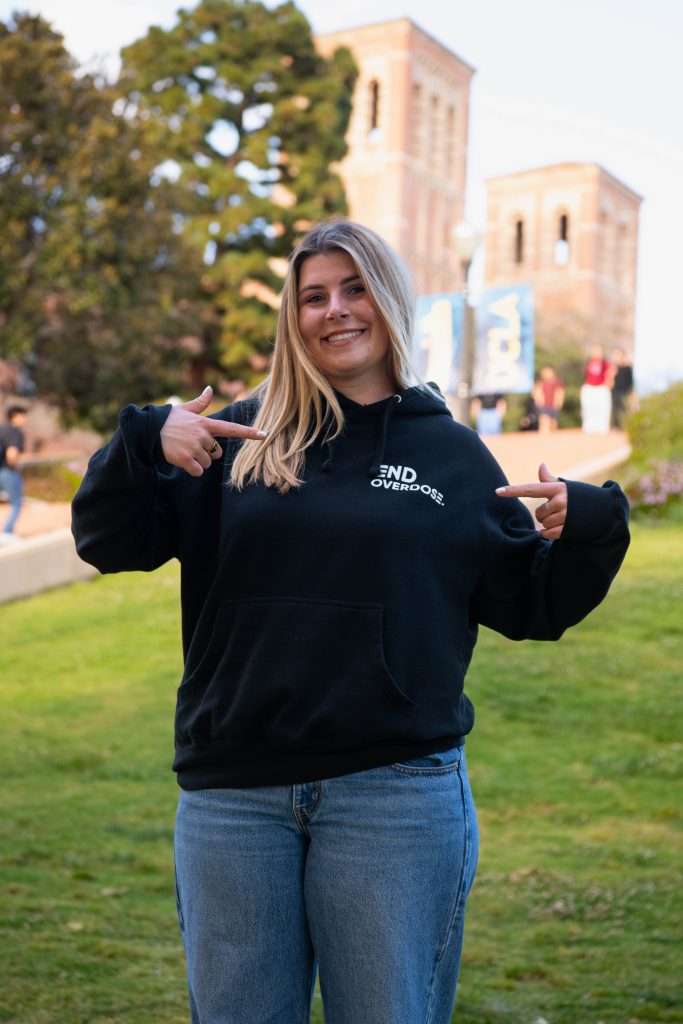
Kenan Thomas, third-year global studies and cognitive science student and fundraising events coordinator at End Overdose UCLA poses for a picture at Janss Steps. Photographed by Khaled Al Duwaikat/BruinLife.
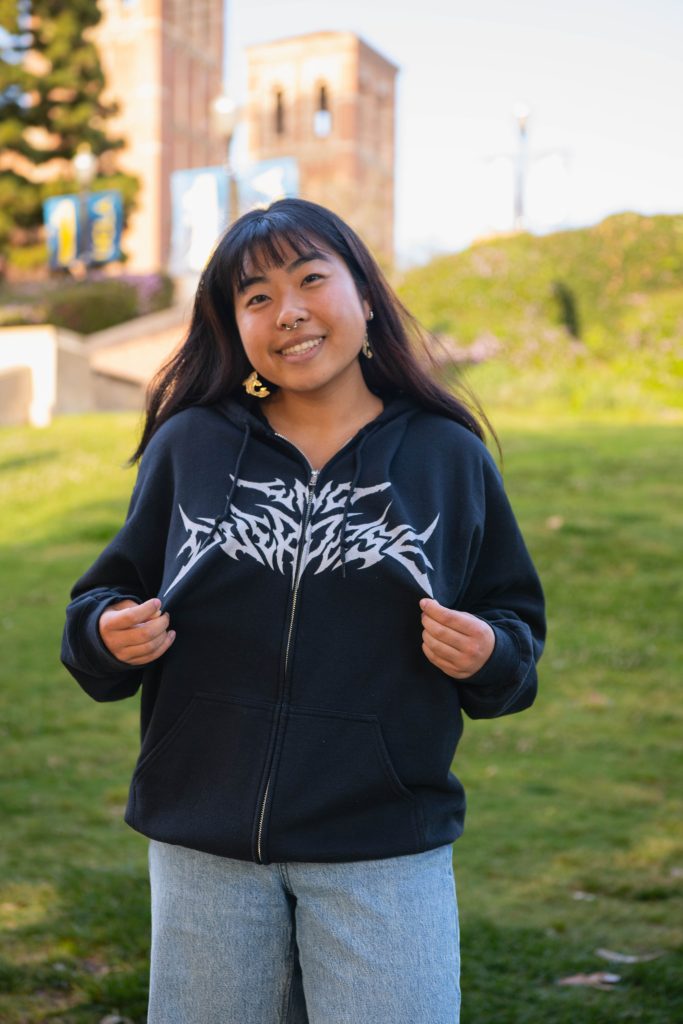
Akane Shimoyoshi, fourth-year neuroscience and statistics/data science student and Logistics VP at End Overdose UCLA poses for a picture at Janss Steps. Photographed by Khaled Al Duwaikat/BruinLife.
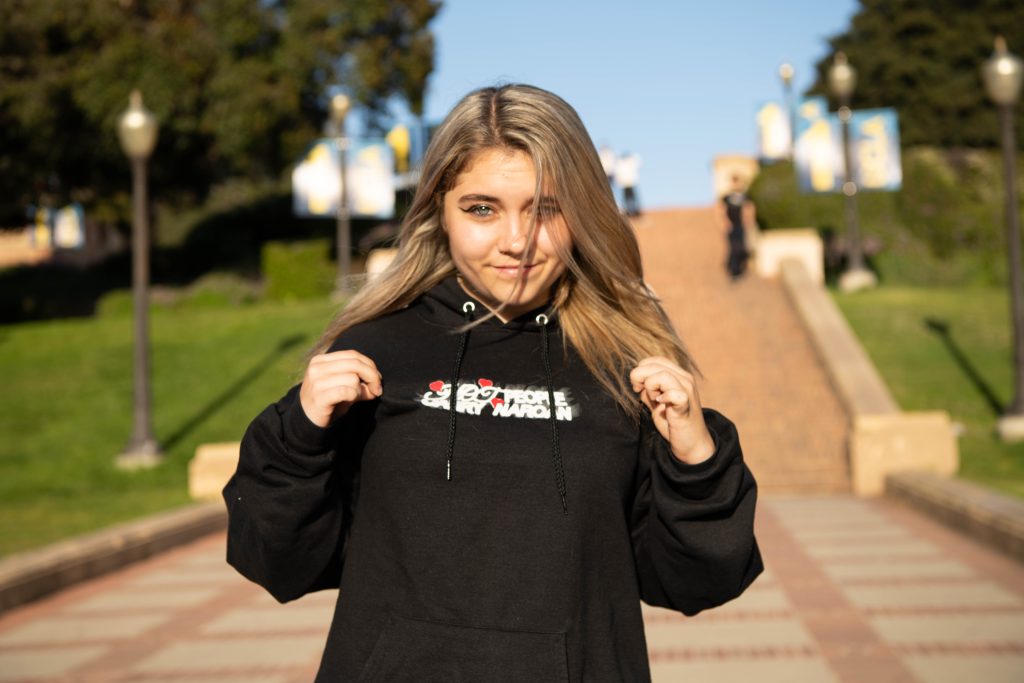
Cayla Younger, second-year physiological science student and media coordinator at End Overdose UCLA poses for a picture at Janss Steps. Photographed by Khaled Al Duwaikat/BruinLife.
Bharucha agreed with Wu that being a part of End Overdose has shown her that many others also share her goal of wanting to destigmatize conversations around drug use by educating themselves on keeping communities safe.
“I think it’s underestimated how much education can really do. What we’ve been doing at trainings and even just giving out fentanyl test strips on Bruin Walk has had a positive impact,” Bharucha said. “You can see that through the organization, people feel like they have learned something valuable and lifesaving.”
For students wishing to get involved with End Overdose, recruitment for the organization is held every fall and spring quarter during the academic year.
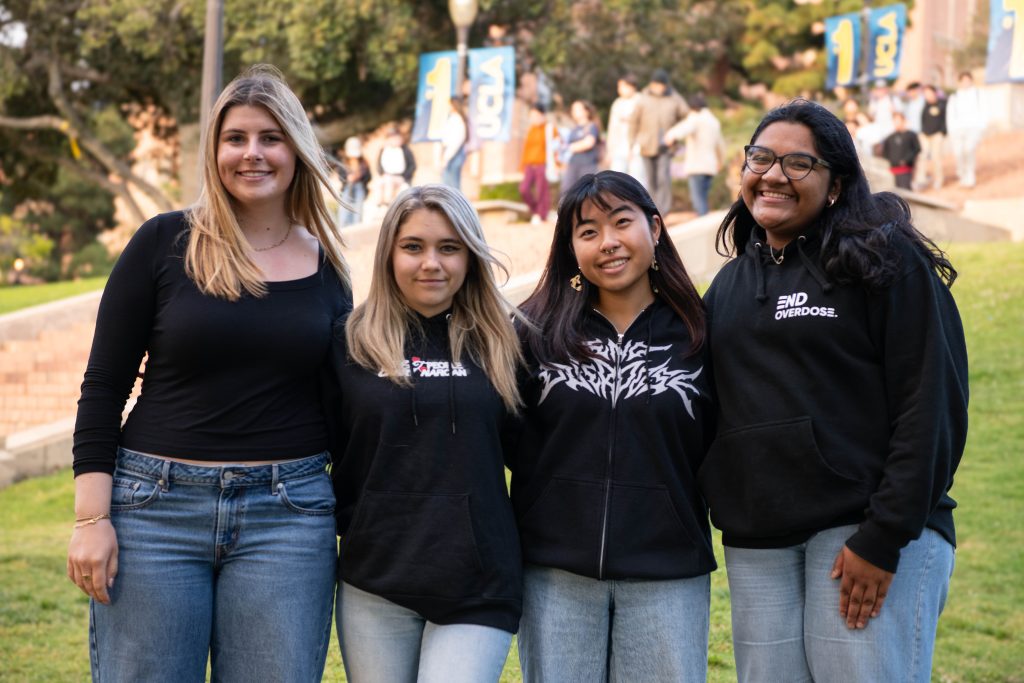
The End Overdose board at Janss Steps. Kenan Thomas, Cayla Younger, Akane Shimoyoshi and Shreya Sundar (Left to Right). Photographed by Khaled Al Duwaikat/BruinLife.
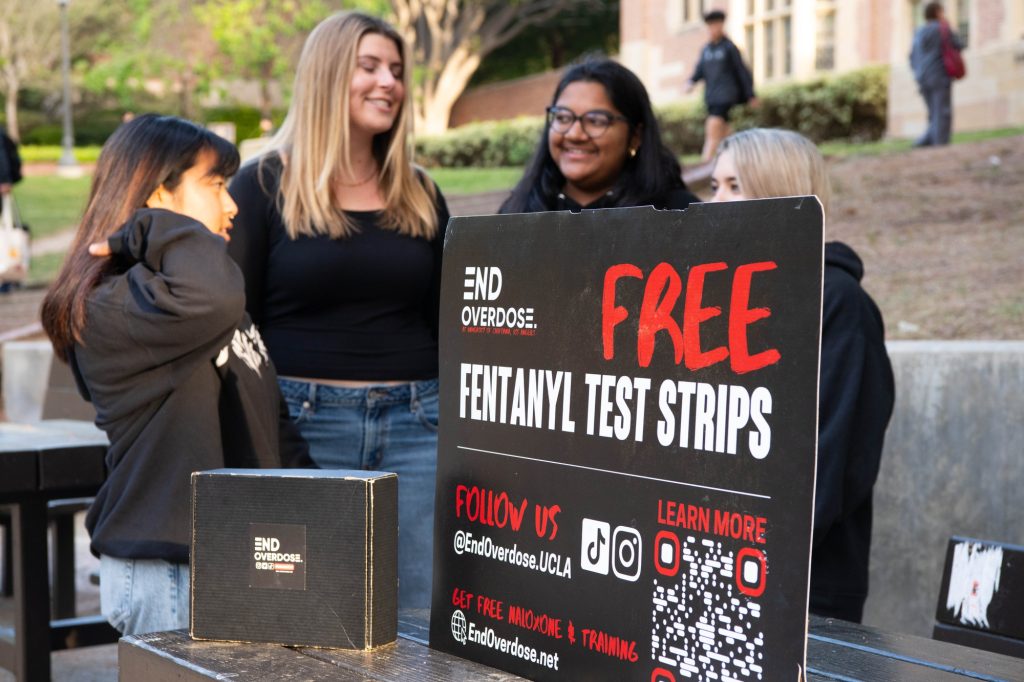
The End Overdose club at UCLA can be spotted tabling on Bruinwalk three days a week. Photographed by Khaled Al Duwaikat/BruinLife.
